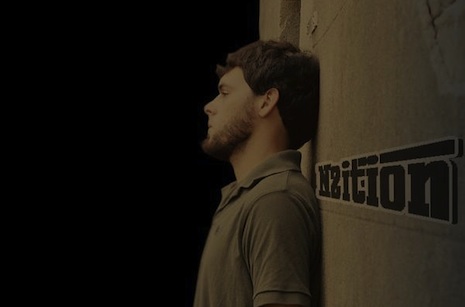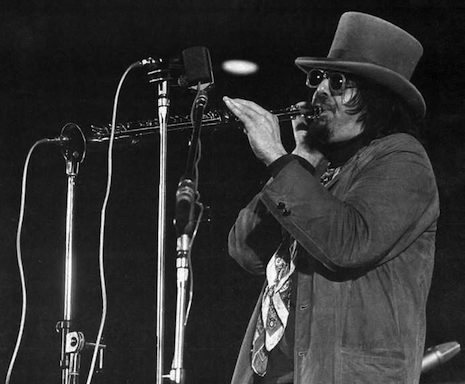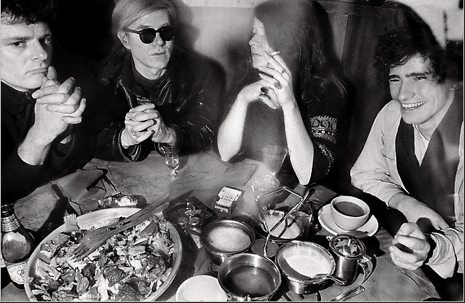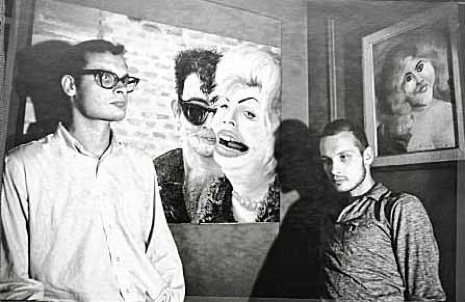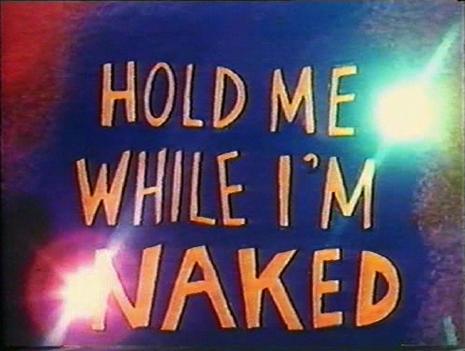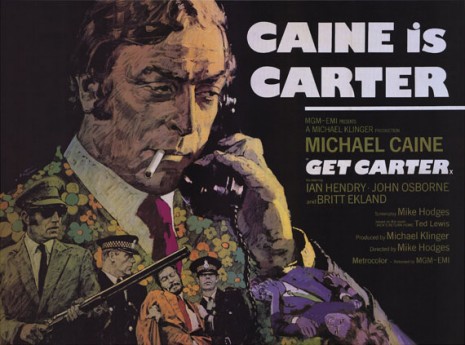
“You’re a big man, but you’re in bad shape. With me it’s a full time job. Now behave yourself.”
It’s Michael Caine as Jack Carter, intimidating a small-town gangster, Cliff Brumby, in the 1971 film, Get Carter. Within seconds Carter has shown Brumby, played by future TV soap star Bryan Mosley, who’s boss - a quick karate chop and Brumby’s on his knees. That’s what Carter does. He’s a hardened criminal, a killer, and now he’s back home to find out who murdered his brother.
Taken from the novel Jack’s Return Home by Ted Lewis, Get Carter changed modern crime fiction. Firstly, it created a new genre British Noir; secondly, it kicked in the French windows at St. Mary Mead, and replaced the anaemic Miss Marple with the harsh reality of professional criminals, and the brutality of their lives, from which every succeeding British crime writer has taken their cue.
Lewis was born in Manchester in 1940, and raised on Humberside. He showed skill as an artist and as a writer, and attended Hull Art School. In 1965, his first novel All The Way Home, and All Through The Night was published. Lewis then worked as animator on The Beatles’ Yellow Submarine, before writing Jack’s Return Home. He wrote a further seven books, including two more Jack Carter novels, and the classics Plender, Billy Rags and GBH. He died too soon, too young, almost forgotten in 1982. What a fickle fucking world we live in.
Jack’s Return Home was in part inspired by a real-life killing that took place during the height of the swinging sixties.
In August 1967, criminal Angus Sibbett bullet-riddled body was found in his Mark Ten Jaguar under Pesspool Bridge, County Durham. Sibbett was a bag man involved in extortion and collecting slot machine money.
Sibbett was employed by notorious, North-East gangster Vincent Landa, a man considered “more important than the Prime Minister”. Sibbett worked with London criminal Dennis Stafford and Landa’s brother, Michael Luvaglio. Luvaglio had no previous convictions but Stafford, who went under an alias, had served a seven year sentence for possession of a firearm and had notoriously escaped from Dartmoor and Wandsworth prisons eventually fleeing to Newcastle, where he set up a company which was a front for fraudulent activities.
When Sibbett was discovered creaming off Landa’s takings - pocketing £1,000 a week - he was killed.
It seemed an open-and-shut case. The police came after the gang. Landa fled the country, while Stafford and Luvaglio were arrested for Sibbett’s murder. But both men claimed their innocence, however, they were tried, found guilty and sentenced to gaol.
Stafford believed he was charged because of his previous activities whilst on the run in Newcastle, and has since stated, “If it had not been for me, Michael would never have been charged.”
While Luvaglio has said: “When I was arrested, the police told me that I only had to say that Stafford had left me for a while that night and I would go free.”
In hindsight, the whole case seemed like a fit-up as the evidence against both men was flimsy to non-existent. Importantly eye-witness statements and forensic evidence, which could have cleared both men, was ignored.
On that fateful night, Sibbett was to meet Stafford and Luvaglio in The Birdcage nightclub in Newcastle. Eyewitnesses vouched for both men, apart from a period of 45-minutes around midnight - the time Sibbett was murdered. This 45-minute window proved crucial, as the police claimed Stafford and Luvaglio had left the nightclub, driven 16 miles, pushed Sibbett’s vehicle off the road, then pumped 3 bullets into him, before returning to the club.
In 1967, even in a souped-up cop car, traveling at full-speed, lights flashing, it wasn’t possible to do what was claimed. But it didn’t matter. Luvaglio and Stafford were set for punishment. It was a warning to any other London criminals (most notably London’s notorious Kray twins) against moving their operations north.
Stafford served 12 years but always insisted his innocence, claiming a Scottish shooter committed the crime. This was confirmed in a TV documentary by John Tumblety, who said on camera that he in fact had driven the real murderer back from Pesspool Bridge to the Birdcage club and that man was neither Luvaglio nor Stafford.
In May 2002 Sibbett’s slaying (now renamed The Get Carter Murder) made news when the European Court of Human Rights ruled that the British Home Secretary had kept Dennis Stafford in jail longer than was necessary and ordered £28,000 compensation to be paid.
To this day, both men continue to campaign to clear their names of the crime they didn’t commit
In Get Carter the film’s slot machine king was played by playwright, John Osborne, whose character Cyril Kinnear, lives in Dryerdale Hall, Durham, the very building Landa used as his gangland HQ.
In 2002 Landa said :
“The two (Stafford & Luvaglio) men were wrongly convicted and the evidence was incorrect. If they were tried today they would never have been found guilty. It was a political trial. The Home Office had suffered at the hands of gangs like the Krays and the Richardsons and they stepped in to smash what they thought was an organised crime ring.”
These aren’t the only characters Lewis adapted for his novel, and later the film. Property developer Cliff Brumby was a hybrid of Newcastle City councillor, T. Dan Smith and architect John Poulson. Both men were notorious in the sixties, and were later found guilty of bribery, corruption and giving backhanders to MPs and councillors in order to have shoddy building plans passed.
The pair destroyed most of Newcastle and built cheap concrete housing and offices. At the trial, the judge said that the scandal “now couples corruption with the north east.” So far reaching were their underhand activities that Conservative Home Secretary, Reginald Maudling resigned over the scandal.
Smith was accused of infiltrating councils across the North of England and corruptly forcing them to give business to architect John Poulson. Smith used £500,000 of Poulson’s money as bribes. Smith ruled with an iron hand and was described as a “demagogue”. He ended his life championing pensioners’ rights from the 14th floor council flat in a block he had built.
Incredibly Get Carter was not a box office hit on its first release. This was in large part down to the stupidity of the critics who described the movie as “soulless and nastily erotic…virtuoso viciousness”, a “sado-masochistic fantasy”, that “one would rather wash one’s mouth out with soap than recommend it.” Of course, since then Get Carter has been rightly reappraised by a younger generation who have hailed Michael Caine’s chilling and utterly compelling performance as Carter, which has led to the movie being described as a classic of modern cinema and arguably the greatest British crime film ever made.






